Review of Ten Canoes
Introduction
Dayindi (Jamie Gulpilil) is taking part in his first hunt for goose eggs with other members of his tribe. He`s not a happy man though. His brother has two wives and Dayindi lusts after the younger of the two. Dayindi must wait, according to tradition, for the right time before taking his first wife, but he is an impatient man. Everyone in his party knows this and joke about it on their trip to the river, where they will make ten bark canoes for their forthcoming hunt on the swamp for goose eggs.
Wise old man Minygululu (Peter Minygululu) attempts to teach Dayindi a valuable lesson about his lust and impatience by telling him a story about his ancestors from long, long ago. This story is about a young man called Yeeralparil (Jamie Gulpilil) and his brother Ridjimiraril (Crusoe Kurddal). Ridjimiraril has three wives, one older, one jealous and one young. Yeeralparil is in the same position as Dayindi and lusts after the younger.
One day the jealous wife disappears and the tribe wonder what has happened to her. They wonder if her disappearance is related to the mysterious stranger who wandered through their land just days before. After considering many explanations, the tribe decide that she ran away through jealousy. Then one day an Uncle to the tribe comes bearing news that the missing spouse has been seen in the camp of a distant tribe. Ridjimiraril forms part of a war party to bring back the wife, but despite missing to go, Yeeralparil must stay as tradition states that in the event of his brother`s death, he will `inherit` the remaining wives. Yeeralparil takes this opportunity to try to gain the attention of the young wife, but the older wiser wife is on to him.
A short while later, the war party returns buoyant but empty handed. The missing wife was not there. The party are relieved and happy to return unharmed but Ridjimiraril starts to brood for his missing wife and sets off a chain of events that will change things forever…
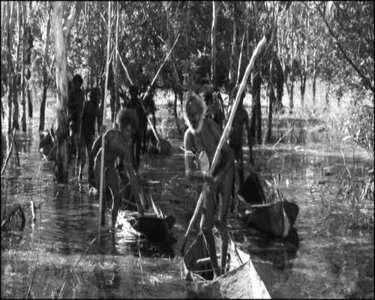
Video
Simply gorgeous cinematography that starts with a sweeping top down shot that feels a little like Google Earth, which makes it sound a little trivial but isn`t. Then there`s a mix of overhead and close shots that are quite breath taking. The story is colour coded into the various segments to avoid confusion; the narrative of the ten men in canoes is in black and white to signify that it happened a long time ago. The main story being told, being even further back in time, is in colour which as the main narrative it should be.
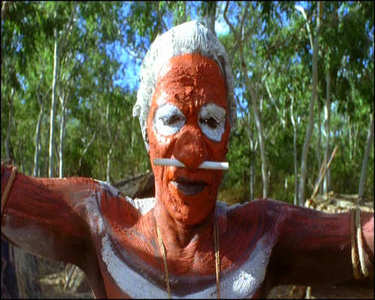
Audio
Superb 5.1 Surround Mix. Granted there isn`t much going on, but the soundtrack feels like authentic bush and places you right in the middle of it. There`s no soundtrack as such, just some indigenous singing and music where the time is right. The only real artificial fx is the sound of thunderous steps when a couple of the tribe are dancing the death dance, but it just feels natural and fits in so well. Special mention needs to go to the narrator, one of the actors I think, for a warm and funny narration that just draws you into the film, making you feel right at home with a very natural style.
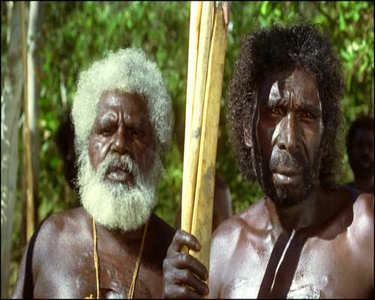
Features
Trailer
Map - great extra that is mainly CGI and shows the location of the village of the actors on the Northern coast of Australia and then the location of filming. Gorgeous extra.
Thomson Time-Line Picture Gallery - fascinating extra based around the work of anthropologist Dr Donald Thomson who photographed the indigenous Aborigines during the 1930`s when their lifestyle was still very much traditional and unspoilt by mainstream Australian influence. Thomson`s photo`s inspired the film and Thomson is still very much revered by these people. This extra shows some of the 4,000 photographs taken by him, the corresponding shot from the film and then places them side by side for comparison. Soundtracked by some traditional music.
The Balanda And The Bark Canoes: Making Ten Canoes - 50 minute documentary that is so far off the normal Making Of style that it is essentially a stand alone documentary. A fascinating look at how the genesis of the film came about, how the story and style came about and how traditional life both interferes and complements the film making process.
Making Canoes: Interviews With Peter Djigirr and Rolf de Heer - short interviews with Djigirr (Co-Director and Actor) and de Heer (Producer, Writer and Director)
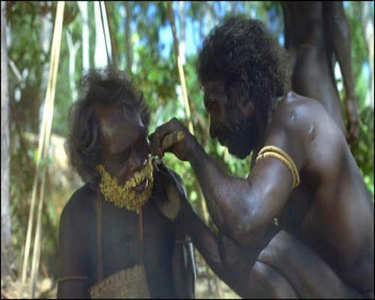
Conclusion
Traditional culture is now one of those things that we read about and go to look at in museum exhibitions. We are now far removed from our cultural roots, and in fact, our culture in the West is developing still so that in a century or so it is likely that we may well rue some of the traditions that we are yet to start or take for granted now. There are still many cultures across the world though that haven`t yet lost their roots, but the number is ever decreasing due to the propensity of man to explore the world and export our values onto other people (whether by force, trade or simply talking).
This film attempts to do a little of the reverse, with the help (ironically enough) of a white film director and a long-dead anthropologist. Rolf de Heer uses photo`s taken in the 1930`s documenting the lifestyle of indigenous people and uses them to tell a story that will allow the subjects of his film to recall some of their lost traditions and gain some respect. Their minds opened by the Balanda (a term for the white man), the cast of this film rediscover lost traditions in the art of boat making, hunting goose eggs and how much simpler they used to live. What is fascinating is that by the end of the film, as shown in the documentary, they seem to have realised that the old ways are better than they are now.
The narrative within a narrative works well, the overall pace is languid but never feels slow. Rather it is a natural pace for a natural film, and a gorgeous looking one at that. It`s a simple story overall about coveting another man`s wife and the repercussions of that coveting. There is a moral to the story, and it applies to all walks of life, but is very much the story of the people being filmed - it may have been written by de Heer but the people drive this film. It is incredibly funny in places, but again in a natural way rather than the forced or scripted laughs of Hollywood. Indeed, de Heer noticed that rehearsals of scenes messed up his actors, who weren`t used to the craft, and so he found he had to strike a fine balance in order to get the shots he wanted when he wanted.
The film was plagued with problems, an under estimation of what was required as well as not understanding the complex laws that the modern indigenous actors live by. One such problem was that actors playing husbands and wives should either be married in real life or of the line so that they could marry if required. This put a bizarre restriction on de Heer`s casting, but he acquiesced without hesitation and overcame everything thrown at him. It`s a film made from monumental patience, a love of the subject and a will to preserve heritage and tradition.
A gorgeous, warm, funny and very original film.
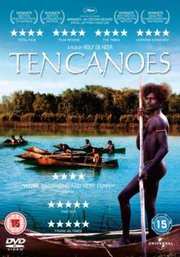




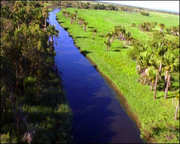

































Your Opinions and Comments
Be the first to post a comment!